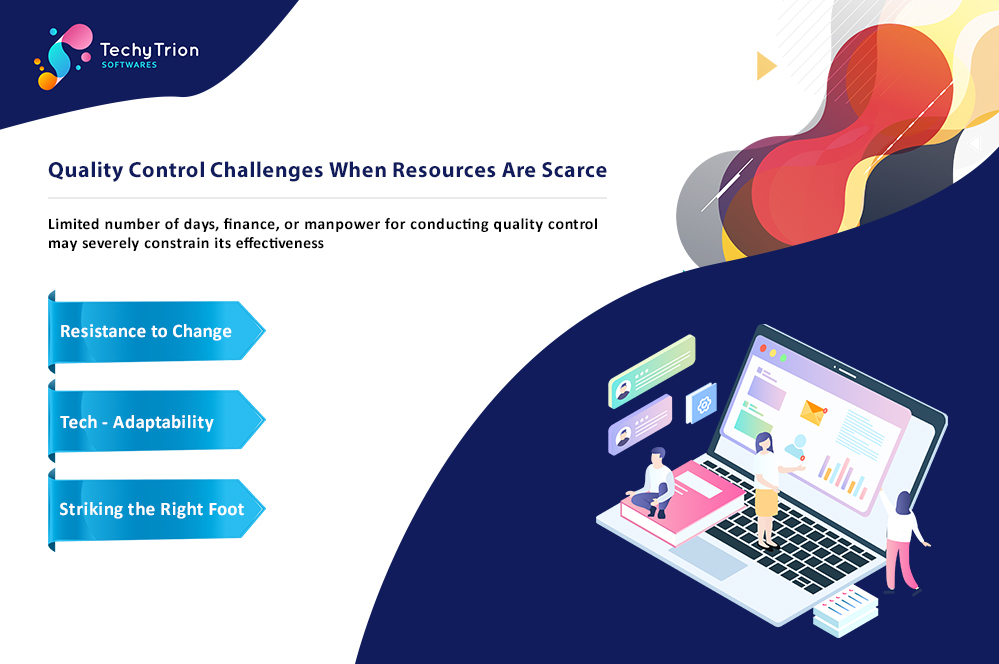
This is the Ultimate Guide to Quality Assurance
With the new market demand in the fast-growing digital age, quality assurance has always played an important role. Quality assurance can be applied to several areas- from
manufacturing to software and in customer services- wherein it ensures that the quality of the final output meets certain quality and reliability specifications for that process. Let us get
below to explore what QA is, its importance, and strategies for effective implementation.
What is Quality Assurance?
QA is understood as being a systematic process by which it can be verified that a process, service, or product conforms to the specific requirements for that process. When Quality
Control mostly deals with the detection of defects in the end product, the primary goal of QA is the prevention of defects that would arise through process improvements.
For example, in software development, effective QA is such that various testing methodologies have been drawn to get the bugs out of a program well before it is delivered
to an end user.
Why QA is Important

Customer Satisfaction: With regards to establishing the confidence of quality in a product or service, quality assurance assures its customers, which in turn ensures the success of the
enterprise. A customer, who has ongoing positive experiences with a certain quality of service, will be inclined to return to and recommend it.
Cost-effectiveness: Fixing the problem in design will save time, labor, material etc. that would ten to twenty-fold cost at production.
Compliance: The whole approach embodies a certain industrial standard and guideline that industries must abide by, ensuring that no legal hassles occur as far as product safety and
finances are concerned. For instance, GMPs can be deployed for the good quality assurance responsibility of the pharmaceutical company.
Brand Reputation: Continuous quality delivery works wonders for the reputation of a corporation in its market, while negative reputation arising mainly as a result of quality issues
kills a brand.
Components Of Quality Assurance
Customer-oriented quality expectations and standards: An adequate level of quality must be formulated against the rate of expectations from the customer and the
requirements of the law. For instance, global quality assurances provide guidance that wins acceptance.
Workflow: To ensure the operation in a structured environment, looking beyond conventional SOPs may give further insight into maintaining transparency in the process, such as into the software testing procedures in order to maintain authenticity and avert risks.
Documentation: All records kept on this are to assure traceability and continuous improvement: Including will be test plans, test cases, and defect reports.
Continuous Testing: Audit checks are performed regularly during the development or production life cycle. This also allows the problem to be detected regardless of information scale through a minimization of risk opportunities.
Feedback Mechanism: The constant customer feedback and data analyses push the processes toward improvement in quality with the most noted example being NPS
surveys that can provide insights into the levels of customer satisfaction.
QA In Practice- Best Practices

Be Agile: Agile development practices and frameworks-Scrum and Kanban-embed QA within the development process enabling ecient feedback and improvement
towards the job done. Agile development is highly collaborative in nature, allowing better time with time-sensitive issues of quality.
Use automation judiciously: QA teams employ automated testing tools for the minutiae of quality control to save time and improve accuracy when testing systems.
For example, one could use automated regression tests to validate that software functions correctly after making changes.
Empower your team through training: Get your people involved in skills and competencies for effective execution of QA. Regular periodic training sessions keep
employees updated on new QA techniques and tools.
Collaboration: Encourage inclusive work within different departments to deal with matters of quality; for instance, QA with development, design, and operations to
ensure Quality.
Quality Assurance Challenges
Quality Control Challenges When Resources Are Scarce: Limited number of days, nance, or manpower for conducting quality control may severely constrain its effectiveness.

Resistance to Change: Employees and management may refuse to adopt a new process or tool. This situation requires providing strategic actionable change management.
Technological Adaptability: As technology continues to grow at a jet-like pace, it requires endless learning, unwavering adaptability, and constant research on what
tools or techniques for quality assurance will keep one in worldly touch.
Striking the Right Foot in Between Speedy Delivery and Quality: Finding the slippery feat between speedy delivery and quality assurance sounds really daunting; this can be made possible by employing CI/CD tools for automated repetitive tasks.
Quality Assurance Future
The pace of evolution is onwards in every aspect because of the emergence of AI, ML, and DevOps. The future of quality assurance is being molded around predictive analytics, AI-driven testing tools, and CI/CD pipeline. The greatest advantage of these techniques is that it has rendered faster quality providing accurate and reliable quality assurance.
Articial intelligence tools analyze large data sets and can predict possible defects and make proactive decisions. At the same time, the ML algorithm can make these test cases optimal, thereby reducing redundancy and allowing them to be tested in the shortest possible time and thus saving resources.
Conclusion
Production of goods is neither the beginning nor the end of these processes. Quality assurance is not just a department; it is a way of thinking that needs to become part
of every organization in this competitive setup, if it is to survive and prosper. Integrating QA into each area of business enterprises will make sure that they yield better products and services that yield delighted customers to ensure steady growth. Whether it is working as an entrepreneur in the startup phase, or being an established entity, a strict quality-assurance program is a necessity and not an option. A business that will not adapt its quality assurance in line with the advancements in technology would be at a great risk of going down.





 Book call
Book call



